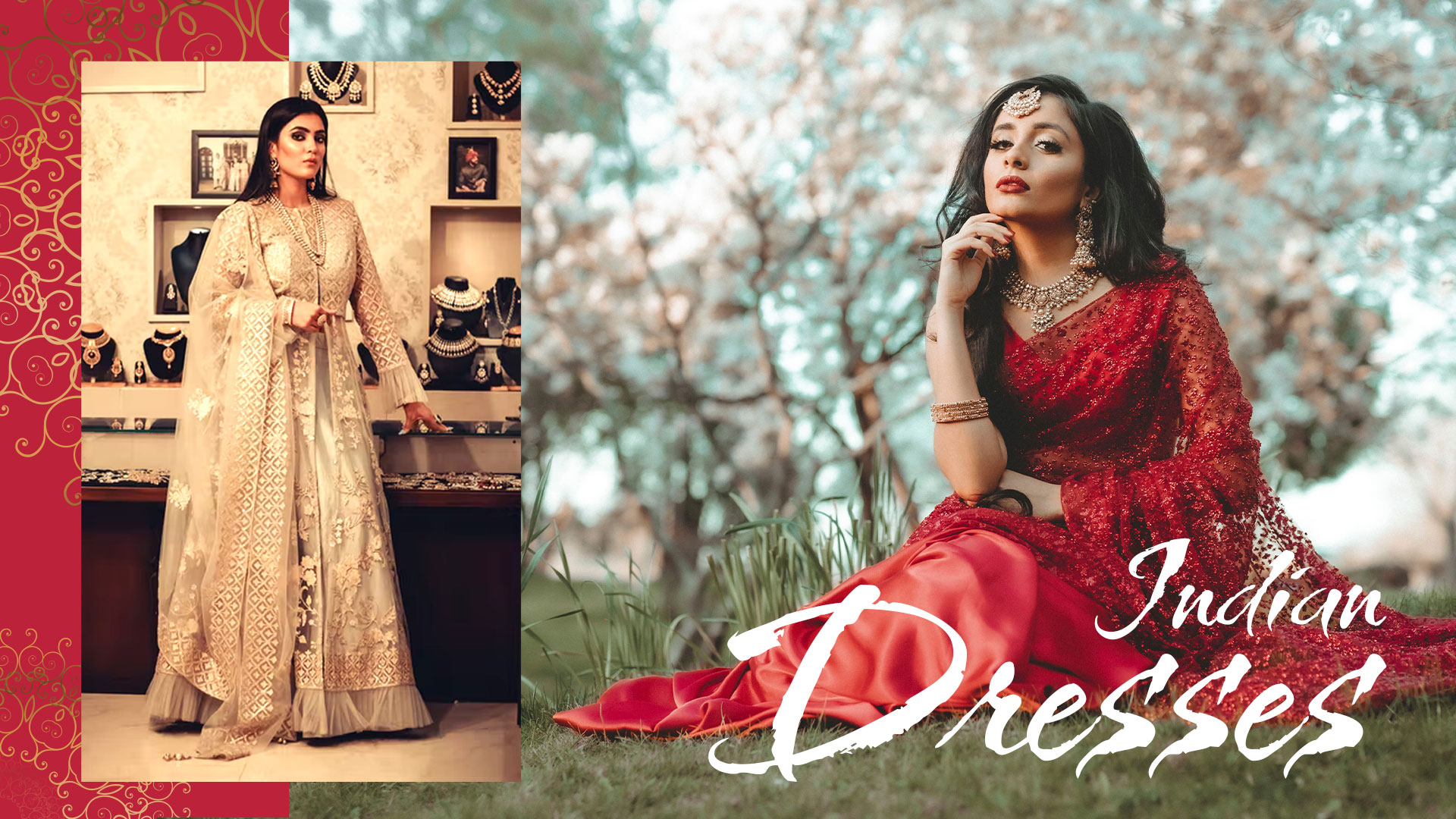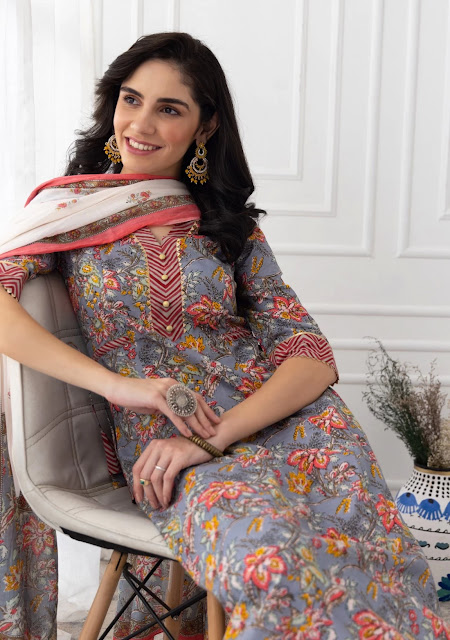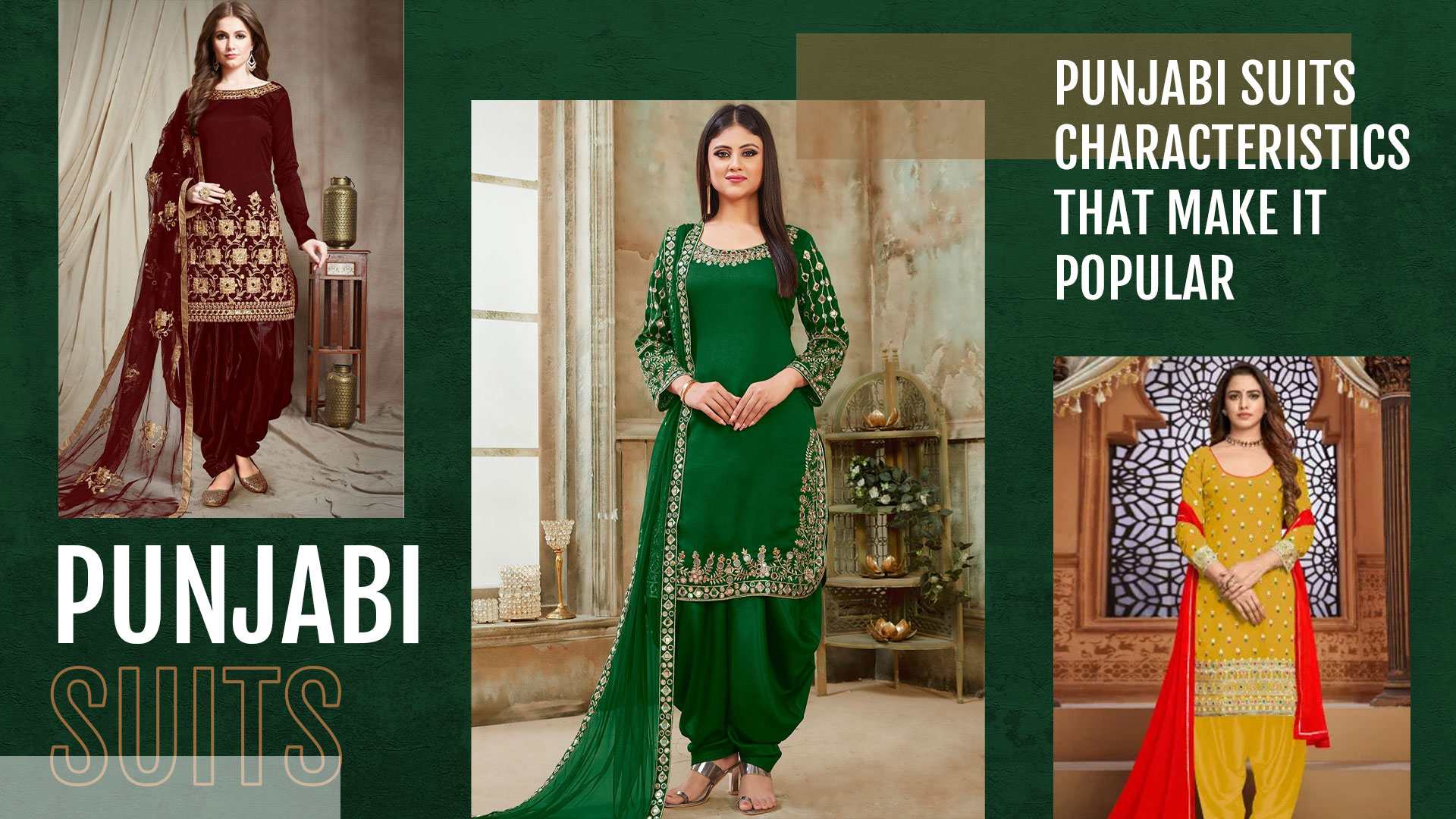The evolution of Indian dresses
India is the world's second-largest exporter of fabrics and garments. In 2022, our textile business is estimated to be worth $59.3 billion on the Internet. This is easily accomplished by utilizing the quantity, variety, and quality of Women's clothing available in our markets. Like other major fields, Indian style and apparel have seen many highs and lows, and the style we see today is a total transformation from what we started with.
History has a habit of repeating itself, which isn't very effective in aesthetics! Indian fashion is as old as civilization itself, influenced by a mix of cultural, regional, and historical factors. Frills Bell bottoms, and boot cut pants, among other vintage trends, are making a reappearance. As a result, it's no surprise that fashion trends in India and the rest of the world tend to repeat themselves decade after decade or add revolutionary twists to current trends.
Ancient Indian dresses
Cloth wrapped around various portions of the body made up most ancient Indian dresses. Ancient Indian dresses were typically wrapped in various ways, ranging from Sarees to Turban and Dhoti to Kurti. Women wore a sari, a 4-9 meter long piece of simple, unsewn material, throughout the Aryan era.
Around 600 BC, Sarees was first referenced in the Vedic period. The majority of women wore basic cotton saris, whereas the wealthy wore saris made of fine fabrics such as silk. Not just the fabric's material but also how it's worn is determined by the location, religion, social standing, and other factors.
Mughal Empire (Mughal dynasty)
Muslin garments made in the southern portion of India were being sold to Roman Emperors by the second century AD. The history of sewn and tailor-made clothing in India may be traced back to the beginning of the tenth century AD. It was popularised in the fifteenth century by the Muslim dynasties of India.
At the time, there were various unique methods and patterns for putting on a sari. Girls wore them as skirts with a pinnacle component slung over their shoulder or worn over their heads as a veil to get dressed up. Working girls used to wear pulled-up saris, which were meticulously pulled between their legs to create something resembling a pair of pants, which are still worn by women in Maharashtra.
Women fighting with armies in the pre-British length tucked the apex a part of their sari into the lower back for comfort and free up their fingers for warfare. Younger girls wore various brilliantly coloured saris, whereas widows and other girls in mourning wore only the finest white saris.
The era of the British Empire
Sari, a versatile women's garment, has been India's signature style fashion for centuries. Salwar Kameez, as well as a variety of other traditional ethnic outfits such as the lugda, lehenga, lungi, sherwani, and khadi garments such as the Nehru Jacket, etc., began as cloth dresser staples. With the arrival of the western world and the establishment of British rule, Indians were exposed to western clothing such as skirts, gowns, trousers, dresses, tuxedos, blazers, and pants. As a result of the confluence of those style aspects, a unique fashion emerged, which is now the style image India presents to the rest of the world.
Britain's late period (the 1940s-1980s)
For many years, international fashions and British times influenced how Indians dressed. Heavy and thick ornaments and embroidered saris were popular in the 1960s, while bright colors, polka dots, bell bottoms, and big sunglasses were popular in the 1970s. India has also had a lot of experience defining women's rights and allowing them to make their own decisions. It has evolved from a modest and reserved conventional style to a more modern and daring option.
The salwar was transformed by the addition of trousers, and the kameez was transformed by the addition of tops and t-shirts. Humans began to adapt more to types of denim, and other westernized materials rather than the traditional benarasi, chikankari, and other handcrafted fabrics. Cotton, Khadi, and linen, which are more suited to our temperature, were replaced with amazing types of outstanding materials such as satin and chiffon, which were in vogue.
The Modern Era (the 1980s- present)
The current length in fashion is largely influenced by Bollywood. With the advent of the Internet, television, and other forms of media, Indian fashion became more globalized, and one-piece dresses, sportswear, halter tops, skirts, and floral wraps became a commonplace choice of apparel in the 1990s. Shirts and trousers and T-blouses, and jeans had become standard attire for Indian males by this time. By the year 2000, when the modern age began, many regressive Indian rituals had been abandoned, women's roles had been solidified largely, and women had become more unbiased and free-thinking.
Instead of wearing traditional ethnic clothing, they adopted the current trends and patterns. They began to wear bolder and more comfortable clothing such as shorts, capri pants, jackets, shirts, and trousers.
We also saw the creation of a one-of-a-kind Indian-style Indian-Western fusion outfit that mixes the comfort and functionality of denim jeans with the beauty and femininity of a salwar kameez. Since then, practically every woman in India has been captivated by this combination of study, labor, and men and women of all ages.
Indian style inclinations as we know them today are a combination of all of the style tendencies throughout Indian history. What we know as Indian attire today is a combination of British (western) and ancient styles, which includes a wide range of local variations and cutting-edge trends influenced in great part by the west.
And it's because of this that it's the most unique and sought-after business on the planet. Also, while the best Indian design is no longer inspired by the west, Indian dresses have become increasingly popular in the west over time.
In conclusion
In terms of scope and variety, the Indian market for the fashion industry, particularly for women, is quite advantageous. While the rapid growth of record generation popularised corporation appearances, the revival of ethnocultural appearances has been a significant factor in popularizing traditional art and craft styles.
Lately, international style producers have all begun to pay notice to this quarter's enormous ability to provide thousands of options to in-house style designers. Over the years, the Indian dresses industry has grown to such a size that it is now on a level with the worldwide style industry and has become one of India's most well-known sales-producing industries.
History has a habit of repeating itself, which isn't very effective in aesthetics! Indian fashion is as old as civilization itself, influenced by a mix of cultural, regional, and historical factors. Frills Bell bottoms, and boot cut pants, among other vintage trends, are making a reappearance. As a result, it's no surprise that fashion trends in India and the rest of the world tend to repeat themselves decade after decade or add revolutionary twists to current trends.
Ancient Indian dresses
Cloth wrapped around various portions of the body made up most ancient Indian dresses. Ancient Indian dresses were typically wrapped in various ways, ranging from Sarees to Turban and Dhoti to Kurti. Women wore a sari, a 4-9 meter long piece of simple, unsewn material, throughout the Aryan era.
Around 600 BC, Sarees was first referenced in the Vedic period. The majority of women wore basic cotton saris, whereas the wealthy wore saris made of fine fabrics such as silk. Not just the fabric's material but also how it's worn is determined by the location, religion, social standing, and other factors.
Mughal Empire (Mughal dynasty)
Muslin garments made in the southern portion of India were being sold to Roman Emperors by the second century AD. The history of sewn and tailor-made clothing in India may be traced back to the beginning of the tenth century AD. It was popularised in the fifteenth century by the Muslim dynasties of India.
At the time, there were various unique methods and patterns for putting on a sari. Girls wore them as skirts with a pinnacle component slung over their shoulder or worn over their heads as a veil to get dressed up. Working girls used to wear pulled-up saris, which were meticulously pulled between their legs to create something resembling a pair of pants, which are still worn by women in Maharashtra.
Women fighting with armies in the pre-British length tucked the apex a part of their sari into the lower back for comfort and free up their fingers for warfare. Younger girls wore various brilliantly coloured saris, whereas widows and other girls in mourning wore only the finest white saris.
The era of the British Empire
Sari, a versatile women's garment, has been India's signature style fashion for centuries. Salwar Kameez, as well as a variety of other traditional ethnic outfits such as the lugda, lehenga, lungi, sherwani, and khadi garments such as the Nehru Jacket, etc., began as cloth dresser staples. With the arrival of the western world and the establishment of British rule, Indians were exposed to western clothing such as skirts, gowns, trousers, dresses, tuxedos, blazers, and pants. As a result of the confluence of those style aspects, a unique fashion emerged, which is now the style image India presents to the rest of the world.
Britain's late period (the 1940s-1980s)
For many years, international fashions and British times influenced how Indians dressed. Heavy and thick ornaments and embroidered saris were popular in the 1960s, while bright colors, polka dots, bell bottoms, and big sunglasses were popular in the 1970s. India has also had a lot of experience defining women's rights and allowing them to make their own decisions. It has evolved from a modest and reserved conventional style to a more modern and daring option.
The salwar was transformed by the addition of trousers, and the kameez was transformed by the addition of tops and t-shirts. Humans began to adapt more to types of denim, and other westernized materials rather than the traditional benarasi, chikankari, and other handcrafted fabrics. Cotton, Khadi, and linen, which are more suited to our temperature, were replaced with amazing types of outstanding materials such as satin and chiffon, which were in vogue.
The Modern Era (the 1980s- present)
The current length in fashion is largely influenced by Bollywood. With the advent of the Internet, television, and other forms of media, Indian fashion became more globalized, and one-piece dresses, sportswear, halter tops, skirts, and floral wraps became a commonplace choice of apparel in the 1990s. Shirts and trousers and T-blouses, and jeans had become standard attire for Indian males by this time. By the year 2000, when the modern age began, many regressive Indian rituals had been abandoned, women's roles had been solidified largely, and women had become more unbiased and free-thinking.
Instead of wearing traditional ethnic clothing, they adopted the current trends and patterns. They began to wear bolder and more comfortable clothing such as shorts, capri pants, jackets, shirts, and trousers.
We also saw the creation of a one-of-a-kind Indian-style Indian-Western fusion outfit that mixes the comfort and functionality of denim jeans with the beauty and femininity of a salwar kameez. Since then, practically every woman in India has been captivated by this combination of study, labor, and men and women of all ages.
Indian style inclinations as we know them today are a combination of all of the style tendencies throughout Indian history. What we know as Indian attire today is a combination of British (western) and ancient styles, which includes a wide range of local variations and cutting-edge trends influenced in great part by the west.
And it's because of this that it's the most unique and sought-after business on the planet. Also, while the best Indian design is no longer inspired by the west, Indian dresses have become increasingly popular in the west over time.
In conclusion
In terms of scope and variety, the Indian market for the fashion industry, particularly for women, is quite advantageous. While the rapid growth of record generation popularised corporation appearances, the revival of ethnocultural appearances has been a significant factor in popularizing traditional art and craft styles.
Lately, international style producers have all begun to pay notice to this quarter's enormous ability to provide thousands of options to in-house style designers. Over the years, the Indian dresses industry has grown to such a size that it is now on a level with the worldwide style industry and has become one of India's most well-known sales-producing industries.






Comments
Post a Comment